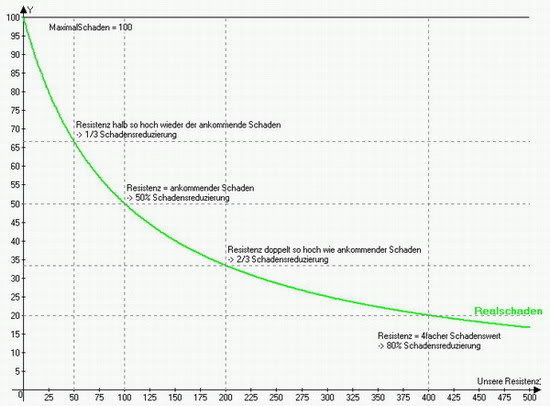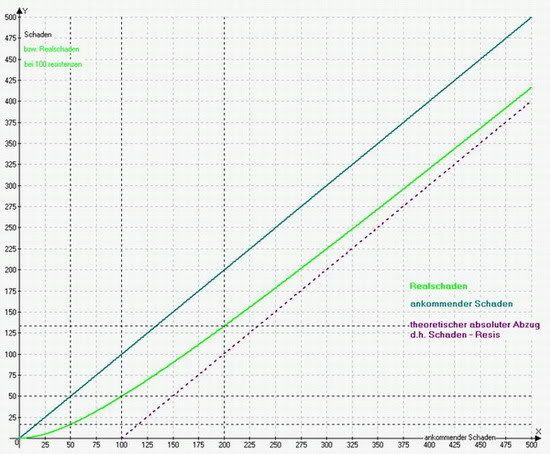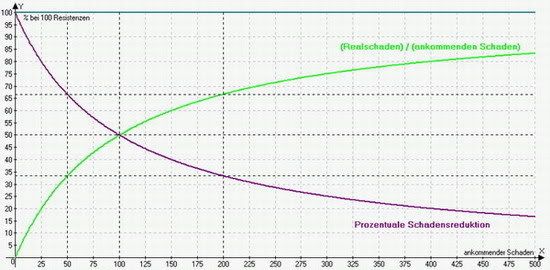Sacred:Inner Works of Resistances, Translation of a German thread by Librarian

|
This page is about a particular player guide.
The contents of this page are player-managed and/or contributed. They may or may not reflect the view of SacredWiki. Any views, or opinionated claims on this page apply solely to the author(s) of the guide. Guides may only be edited by the author. |
Posted at Darkmattersfor review and discussion
Contents
Inner works of resistances
[Original article in German by Covenant for inSacred.de, translated by Librarian]
Foreward
[color=navy]Something need to be said here.
I tried to contact the original writer of the article but have not received any response. Many things could have went wrong of course. For one, maybe he doesn't understand English and had no idea what I'm ask him for. wink.gif Its more likely that he has moved on like Librarian.
Still I decided to post it because Librarian has gotten permission for the translation, and I have not modified a single word on this (just some formatting and minor organizing). That said, if anyone has a valid reason for me to remove this, I will do so.
With that out of the way, a little thought from me:
I always liked this short but very useful article on resistances, namely the explanation of how mono-elemental is significantly more powerful than multi-elemental. (And how it still makes sense even though I use a not so good translator to help me read the German)
As far as I know, this has never laned on the international side of the forum. And well among the things Librarian gave me, there is a translation of the article, which is still valid.
As always, questions and comments are welcome.
Myles[/color]
[center]There's a modest formula in the "official" strategy guide from Ascaron:[/center]
[color=red][center]Received Damage =[/center][/color] [color=red][center]phys.dam*{phys.dam/(phys.dam + phys.res)}[/center][/color] [color=red][center]+fire.dam*{...}+mag.dam{...}+pois.dam{...}[/center][/color]
At the first glance it doesn't look promising yet on closer examination can trigger interesting conclusions especially pertaining not to resistances of the player char but of the enemies (from which this formula was derived). Here are several graphs and examples:
Terms
[color=blue]Inflicted Damage[/color] - total damage that is inflicted with a weapon blow, shot, spell; it hasn't been decreased by resistances yet
[color=blue]Received Damage[/color] - real damage decreased by resistances, indicated by the floating numbers in the game
[color=blue]Hit[/color] - a successful blow, shot
[color=blue]One Hit[/color] - dealing exactly one hit to an opponent
[color=blue]Multi Hit[/color] - many combat arts allow hits to be delivered on several opponents and all such arts will be further referred to as multi hit
[color=blue]Element[/color] - type of damage: physical, magic, fire or poison
Character's resistances
Here's a very simple example. What effect does the inflicted damage have and how can one protect from it? The graph below details how adequate resistances modify the inflicted damage of 100 points (just any element, doesn't matter which one exactly - only that resistances match damage type).
(in the stats screen you can hover over the line of total resistances to get a detailed resists breakdown)
[center]Graph 1: 100 damage vs resists (character)[/center]
[center] [/center]
[/center]
It's important to note how effective different resistance ratings are.
Clearly with 100 resists countering 100 inflicted damage only 50 received damage scrapes through - that is damage is decreased by 50%. The progression of the curve is interesting here:
- 200 res (or twice the inflicted damage) reduces damage by 2/3
- 400 res reduces damage by 80%, although compared to 50% reduction it needs 4 times more res
- 1000 res (10 times the inflicted damage) gives ~91% damage reduction
It looks deadly cool but is associated with incredible costs.
Now close-combat characters especially those mad about getting sky-high resistances should ask whether its worthwhile using equipment slots for huge resistances. You need more and more resists to lower damage even by a tiny bit. At the same time it's clear that you shouldn't totally rely on resistances cause you can't get totally immune; defense rating is also important.
As far as low-res characters goes - mages and rangers such as Wood Elves: Effect on damage reduction is enormous at stages where resistances are low. Resistances half the inflicted damage grant a 33% reduction. It means that players who are normally careless about resistances will receive enormous results paying just a little more attention to resistances.
Enemies' resistances
And now to a more splendid aspect of this formula: when applied to foes. It leads to conclusions different from D2 (where there's no difference whether you hit 10 times with 100 damage or once with 1000). Here's a graph:
[center]Graph 2: 100 resists vs damage (foe)[/center]
[center] [/center]
[/center]
I assume that the enemy has 100 resistances and look how much damage it will receive at different damage levels.
Notes: The [color=green]dark-green[/color] line indicates inflicted damage (f (x) = x). The [color=lime]light-green[/color] line is the damage received by a foe. The [color=purple]violet line[/color] has been drawn just for help and indicates what the received damage would by if resistances were simply deducted from inflicted damage.
It is noticeable that resistances work "similar" to absolute deduction of resists from damage but not completely. When damage is below or equal to resists (damage in range from 0 to 130-150) we see a steady % deduction from damage, yet there's no point where damage is totally nullified. That's how it works in D2. If damage surpasses resistances they are apparently deducted from inflicted damage. To put it more correctly if there were absolute deduction damage would be reduced ever more, as it actually happens with resistances.
Against frequent hits with small damage resistances protect by %, against damage higher than resistances the latter protect with absolute damage reduction in the first place. Meaning that resists are very effective when countering small damage, against higher damages their effectiveness gradually decreases.
Here's a similar graph detailing relative damage:
[center]Graph 3: 100 resists vs damage (foe; relative)[/center]
[center] [/center]
[/center]
Here again we assume that the enemy has only 100 resists but this picture shows how many % of inflicted damage ends up as received damage ([color=lime]light-green curve[/color]). And for comparison the amount of reduced damage ([color=purple]violet curve[/color]).
It clearly works different than D2 - in this third graph drawn for D2 the curve for received damage would be a simple straight line. I.e. no matter how high the damage were it would be reduced by a fixed percentage.
The following should be emphasized: many hits for small damage are reduced much greater than a single hit for huge damage. That's very interesting in our hack'n slash.